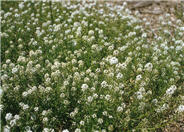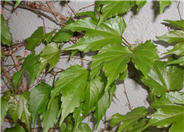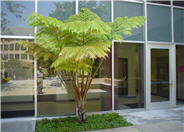
Common name:Sweet Alyssum
Botanical name:Lobularia maritima
Lobularia maritima is an annual. It is a low branching, trailing plant to 1' tall, with narrow or lance-shaped leaves .5"-2" long. There are tiny, four-petaled, white flowers crowded in clusters. This plant can be invasive in some areas, so use caution.

Common name:Boston Ivy
Botanical name:Parthenocissus tricuspidata
This deciduous vine grows leaves that are usually lobed and divided into 3 leaflets. It clings tightly to any surface.

Common name:Australian Tree Fern
Botanical name:Cyathea cooperi
This evergreen fern reaches a height of 10' with light green fronds that spread to a width of 15'. Its fronds are wider and held more horizontally than those of the Tasmanian fern tree. It requirs part shade to shade, with average to little summer watering. This plant performs well in containers, and is damaged by frost below 25 degrees F.

Common name:Sprenger Asparagus
Botanical name:Asparagus densiflorus 'Sprengeri'
This plant is given a soft, mound-like appearance by the long, arching branches that are found covered with small, bright green leaves. It is able to grow in either full sun or partial shade. This plant is fast growing and can be invasive.
This plant is poisonous if ingested.

Common name:Bear's Breech, Acanthus
Botanical name:Acanthus mollis
This perennial produces large clusters of glossy foliage that is deeply lobed. Its leaves may reach lengths of 2'. The tall, purplish-white flower spikes are usually seen in late spring to early summer. It can be used as an accent plant. Acanthus is an effective, shade loving, herbaceous shrub.
Designer:
Photographer: GardenSoft
Incorporate compost 6" into your soil to retain water, reduce compaction, feed earthworms, and provide valuable nutrients to your plants.
Remove irrigation water and fertilizer from areas where you don't want weeds to grow.